Prosumer Response Estimation Using SINDyc in Conjunction with Markov-Chain Monte-Carlo Sampling
Abstract
1. Introduction
2. Methodology
2.1. A Sparse Nonlinear System Identification Algorithm
- Structure selection is computationally demanding, especially for high dimensional problems.
- The extrapolation capabilities of the power series are sub-optimal.
- Polynomial models suffer heavily from the curse of dimensionality.
- The capability to approximate a broad group of target problems;
- Low sensitivity to noise;
- Global explanatory capabilities.
| Algorithm 1: Sweep over the set of regularization coefficients and identification of SINDyc models. It returns when the sparsity level satisfies a chosen criterion, and at a minimum, an evaluation function examines the stability properties of the model. |
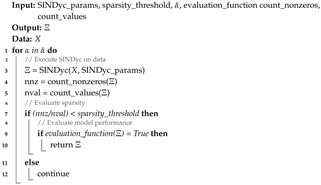 |
2.2. Probabilistic Model
2.3. Probabilistic Model Inference
| Algorithm 2: Probabilistic model inference: using a candidate model derived using SINDyc in Algorithm 1, MCMC is performed on the system observations . |
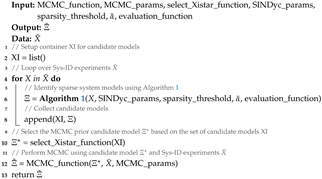 |
2.4. Excitation Model
3. Results
3.1. Polynomial Prediction Model
3.2. Model Coefficient Distribution Inference Using MCMC
3.2.1. An Exemplary Prior PDF
3.2.2. Probabilistic Model
4. Discussion
5. Materials and Methods
6. Conclusions
Author Contributions
Funding
Conflicts of Interest
Nomenclature
| Algorithmic Symbols | |
| count_nonzeros | Count nonzeros in |
| count_values | Count values in |
| evaluation_function | Model evaluation function |
| MCMC_function | Function performing MCMC |
| MCMC_params | Parameters to MCMC_function |
| nnz | Number of non-zeros in |
| nval | Number of values in |
| select_Xistar_function | Function selecting from the set of candidate models XI |
| SINDyc_params | Arguments passed to the SINDyc algorithm |
| sparsity_threshold | Permissible fraction of nonzero elements in |
| XI | List of candidate models |
| Mathematical Symbols | |
| Regularization coefficient | |
| Free system dynamics | |
| Set of regularization coefficients | |
| Forced system dynamics | |
| Prior of residual error | |
| Prior of sparse model coefficients | |
| Sparse candidate model coefficients | |
| Posterior predictive check of the system observations z | |
| Prior mean of residual error | |
| Prior dispersion of the residual error | |
| Prior dispersion of candidate model coefficients | |
| Model structure | |
| Prior of the residual error | |
| Posterior distribution of sparse model coefficients | |
| MCMC seed | |
| Sparse model coefficients | |
| model coefficient | |
| b | Sweep bounds |
| Cluster 0, Cluster 1 | |
| Model 0, Model 1 | |
| f | Nonlinear function |
| m | Probabilistic model prior |
| N | Number of observations |
| n | Node n |
| Number of candidate regularization coefficients | |
| Burn-in iterations (warm-up) | |
| Numbers of chains | |
| Iterations per chain | |
| Cluster 0, Cluster 1 | |
| P | Prosumer price response |
| p | Price offer |
| Excitation signal | |
| Sampling rate | |
| v | Measurement noise |
| X | Sys-ID data (system observations) |
| x | System states |
| y | Model output |
| z | System observations |
Abbreviations
| DR | demand response |
| EV | electric vehicle |
| ICo | indirect control |
| LASSO | least absolute shrinkage and selection operator |
| MCMC | Markov-chain Monte-Carlo |
| MLE | maximum likelihood estimation |
| NUTS | no-u-turn sampler |
| ODE | ordinary differential equation |
| probability density function | |
| PPC | posterior predictive check |
| PR | prosumer response |
| RES | renewable energy source |
| SINDy | sparse system identification of nonlinear dynamics |
| SINDyc | sparse system identification of nonlinear dynamics with control |
| SMPC | stochastic model predictive controller |
| Sys-ID | system identification |
| V2G | vehicle-to-grid |
Appendix A
| Symbol | Relation | Distribution |
|---|---|---|
| ∼ | ||
| ∼ | ||
| ∼ | ||
| v | ∼ | |
| ∼ | ||
| ∼ | ||
| Symbol | Relation | Value |
| = | 1s | |
| = | 50 | |
| = | 5 | |
| = | 100 | |
| b | = | |
| = | 1000 | |
| = | 4 | |
| = | 500 | |
| = | 101 |
References
- Haring, T.; Andersson, G. Contract Design for Demand Response. In Proceedings of the IEEE PES Innovative Smart Grid Technologies, Europe, Istanbul, Turkey, 12–15 October 2014; pp. 1–6. [Google Scholar] [CrossRef]
- Junker, R.G.n.; Azar, A.G.; Lopes, R.A.; Lindberg, K.B.; Reynders, G.; Relan, R.; Madsen, H. Characterizing the Energy Flexibility of Buildings and Districts. Appl. Energy 2018, 225, 175–182. [Google Scholar] [CrossRef]
- Flocha, C.L.; Bellettib, F.; Saxenac, S.; Bayena, R.M.; Mouraa, S. Distributed Optimal Charging of Electric Vehicles for Demand Response and Load Shaping. In Proceedings of the 54th IEEE Conference on Decision and Control, CDC 2015, Osaka, Japan, 15–18 December 2015; p. 7403254. [Google Scholar] [CrossRef]
- Jin, M.; Feng, W.; Liu, P.; Marnay, C.; Spanos, C. MOD-DR: Microgrid Optimal Dispatch with Demand Response. Appl. Energy 2017, 187, 758–776. [Google Scholar] [CrossRef]
- Nwulu, N.I.; Xia, X. Optimal Dispatch for a Microgrid Incorporating Renewables and Demand Response. Renew. Energy 2017, 101, 16–28. [Google Scholar] [CrossRef]
- Sokoler, L.E.; Edlund, K.; Frison, G.; Skajaa, A.; Jø rgensen, J.B. Real-Time Optimization for Economic Model Predictive Control. In Proceedings of the 10th European Workshop on Advanced Control and Diagnosis, Copenhagen, Denmark, 8–9 November 2012. [Google Scholar]
- Short, J.A.; Infield, D.G.; Freris, L.L. Stabilization of Grid Frequency Through Dynamic Demand Control. IEEE Trans. Power Syst. 2007, 22, 1284–1293. [Google Scholar] [CrossRef]
- Ljung, L. System Identification: Theory for the User; Prentice Hall Information and System Sciences Series; Prentice Hall PTR: Upper Saddle River, NJ, USA, 1999. [Google Scholar]
- Nelles, O. Nonlinear System Identification; Springer: Berlin/Heidelberg, Germany, 2001. [Google Scholar] [CrossRef]
- Nguyen, N.T. Model-Reference Adaptive Control; Springer: New York, NY, USA, 2017. [Google Scholar]
- Brunton, S.L.; Proctor, J.L.; Kutz, J.N. Sparse Identification of Nonlinear Dynamics with Control (SINDYc). arXiv 2016, arXiv:1605.06682. [Google Scholar]
- Tibshirani, R. Regression Shrinkage and Selection via the Lasso. J. R. Stat. Soc. Ser. B (Methodol.) 1996, 58, 267–288. [Google Scholar] [CrossRef]
- Brunton, S.L.; Proctor, J.L.; Kutz, J.N. Discovering Governing Equations from Data by Sparse Identification of Nonlinear Dynamical Systems. Proc. Natl. Acad. Sci. USA 2016, 113, 3932–3937. [Google Scholar] [CrossRef]
- Kaiser, E.; Kutz, J.N.; Brunton, S.L. Sparse Identification of Nonlinear Dynamics for Model Predictive Control in the Low-Data Limit. Proc. R. Soc. A 2018, 474. [Google Scholar] [CrossRef]
- De Zotti, G.; Pourmousavi, S.A.; Madsen, H.; Kjolstad Poulsen, N. Ancillary Services 4.0: A Top-to-Bottom Control-Based Approach for Solving Ancillary Services Problems in Smart Grids. IEEE Access 2018, 6, 11694–11706. [Google Scholar] [CrossRef]
- Knudsen, M.D.; Rotger-Griful, S. Combined Price and Event-Based Demand Response Using Two-Stage Model Predictive Control. In Proceedings of the 2015 IEEE International Conference on Smart Grid Communications (SmartGridComm), Miami, FL, USA, 2–5 November 2015; pp. 344–349. [Google Scholar]
- Corradi, O.; Ochsenfeld, H.; Madsen, H.; Pinson, P. Controlling Electricity Consumption by Forecasting Its Response to Varying Prices. IEEE Trans. Power Syst. 2013, 28, 421–429. [Google Scholar] [CrossRef]
- Halvgaard, R.; Poulsen, N.K.L.; Madsen, H.; Jø rgensen, J.B. Economic Model Predictive Control for Building Climate Control in a Smart Grid. In Proceedings of the 2012 IEEE PES Innovative Smart Grid Technologies (ISGT), Washington, DC, USA, 16–20 January 2012; pp. 1–6. [Google Scholar]
- Halvgaard, R.; Poulsen, N.K.; Madsen, H.; Jø rgensen, J.B. Thermal Storage Power Balancing with Model Predictive Control. In Proceedings of the 2013 European Control Conference (ECC), Zurich, Switzerland, 17–19 July 2013; pp. 2567–2572. [Google Scholar]
- Morales, J.M.; Conejo, A.J.; Madsen, H.; Pinson, P.; Zugno, M. Integrating Renewables in Electricity Markets; International Series in Operations Research & Management Science; Springer: Boston, MA, USA, 2014; Volume 205. [Google Scholar] [CrossRef]
- Roscoe, A.; Ault, G. Supporting High Penetrations of Renewable Generation via Implementation of Real-Time Electricity Pricing and Demand Response. IET Renew. Power Gener. 2010, 4, 369. [Google Scholar] [CrossRef]
- Madsen, H.; Parvizi, J.; Halvgaard, R.; Sokoler, L.E.; Jø rgensen, J.B.; Hansen, L.H.; Hilger, K.B. Control of Electricity Loads in Future Electric Energy Systems. In Handbook of Clean Energy Systems; Wiley: Copenhagen, Denmark, 2014; Volume 6, pp. 2213–2236. [Google Scholar]
- Mathieu, J.L.; Vayá, M.G.; Andersson, G. Uncertainty in the Flexibility of Aggregations of Demand Response Resources. In Proceedings of the IECON 2013—39th Annual Conference of the IEEE Industrial Electronics Society, Vienna, Austria, 10–13 November 2013; pp. 8052–8057. [Google Scholar] [CrossRef]
- Bruninx, K.; Pandžic, H.; Cadre, H.L.; Delarue, E. On Controllability of Demand Response Resources Amp; Aggregators’ Bidding Strategies. In Proceedings of the 2018 Power Systems Computation Conference (PSCC), Dublin, Ireland, 11–15 June 2018; pp. 1–7. [Google Scholar] [CrossRef]
- Millar, R.J.; Ekström, J.; Lehtonen, M.; Saarijärvi, E.; Degefa, M.; Koivisto, M. Probabilistic Prosumer Node Modeling for Estimating Planning Parameters in Distribution Networks with Renewable Energy Sources. In Proceedings of the 2017 IEEE 58th International Scientific Conference on Power and Electrical Engineering of Riga Technical University (RTUCON), Riga, Latvia, 12–13 October 2017; pp. 1–8. [Google Scholar] [CrossRef]
- Frigola, R.; Lindsten, F.; Schön, T.B.; Rasmussen, C.E. Bayesian Inference and Learning in Gaussian Process State-Space Models with Particle MCMC. arXiv 2013, arXiv:1306.2861. [Google Scholar]
- Fuentes, R.; Dervilis, N.; Worden, K.; Cross, E. Efficient Parameter Identification and Model Selection in Nonlinear Dynamical Systems via Sparse Bayesian Learning. J. Phys. Conf. Ser. 2019, 1264, 012050. [Google Scholar] [CrossRef]
- Zeng, L.; Shi, L.; Zhang, D.; Wu, L. A Sparse Grid Based Bayesian Method for Contaminant Source Identification. Adv. Water Resour. 2012, 37, 1–9. [Google Scholar] [CrossRef]
- Hirose, K.; Imada, M. Sparse Factor Regression via Penalized Maximum Likelihood Estimation. Stat. Pap. 2018, 59, 633–662. [Google Scholar] [CrossRef]
- Banerjee, O.; Ghaoui, L.E.; d’Aspremont, A. Model Selection Through Sparse Maximum Likelihood Estimation. arXiv 2007, arXiv:0707.0704. [Google Scholar]
- Carpenter, B.; Lee, D.; Brubaker, M.A.; Riddell, A.; Gelman, A.; Goodrich, B.; Guo, J.; Hoffman, M.; Betancourt, M.; Li, P. Stan: A Probabilistic Programming Language. J. Stat. Softw. 2017, 76. [Google Scholar] [CrossRef]
- Hoffman, M.D.; Gelman, A. The No-U-Turn Sampler: Adaptively Setting Path Lengths in Hamiltonian Monte Carlo. J. Mach. Learn. Res. 2014, 15, 1593–1623. [Google Scholar]
- Schmid, P.J. Dynamic Mode Decomposition of Numerical and Experimental Data. J. Fluid Mech. 2010, 656, 5–28. [Google Scholar] [CrossRef]
- Schmid, P.J. Applications of the Dynamic Mode Decomposition. Theor. Comput. Fluid Dyn. 2011, 25, 249–259. [Google Scholar] [CrossRef]
- Gabry, J.; Simpson, D.; Vehtari, A.; Betancourt, M.; Gelman, A. Visualization in Bayesian Workflow. J. R. Stat. Soc. Ser. A (Stat. Soc.) 2019, 182, 389–402. [Google Scholar] [CrossRef]
- Madsen, H.; Thyregod, P. Introduction to General and Generalized Linear Models; Texts in Statistical Science; Chapman & Hall: London, UK, 2010. [Google Scholar]
- Scott, D. Multivariate Density Estimation: Theory, Practice, and Visualization; Wiley Series in Probability and Statistics; Wiley: Hoboken, NJ, USA, 2015. [Google Scholar]
- Kumar, R.; Carroll, C.; Hartikainen, A.; Martin, O. ArviZ a Unified Library for Exploratory Analysis of Bayesian Models in Python. J. Open Source Softw. 2019, 4, 1143. [Google Scholar] [CrossRef]
- Oldewurtel, F.; Roald, L.; Andersson, G.; Tomlin, C. Adaptively Constrained Stochastic Model Predictive Control Applied to Security Constrained Optimal Power Flow. In Proceedings of the 2015 American Control Conference (ACC), Chicago, IL, USA, 1–3 July 2015; pp. 931–936. [Google Scholar] [CrossRef]
- Heirung, T.A.N.; Paulson, J.A.; Lee, S.; Mesbah, A. Model Predictive Control with Active Learning under Model Uncertainty: Why, When, and How. AIChE J. 2018, 64, 3071–3081. [Google Scholar] [CrossRef]
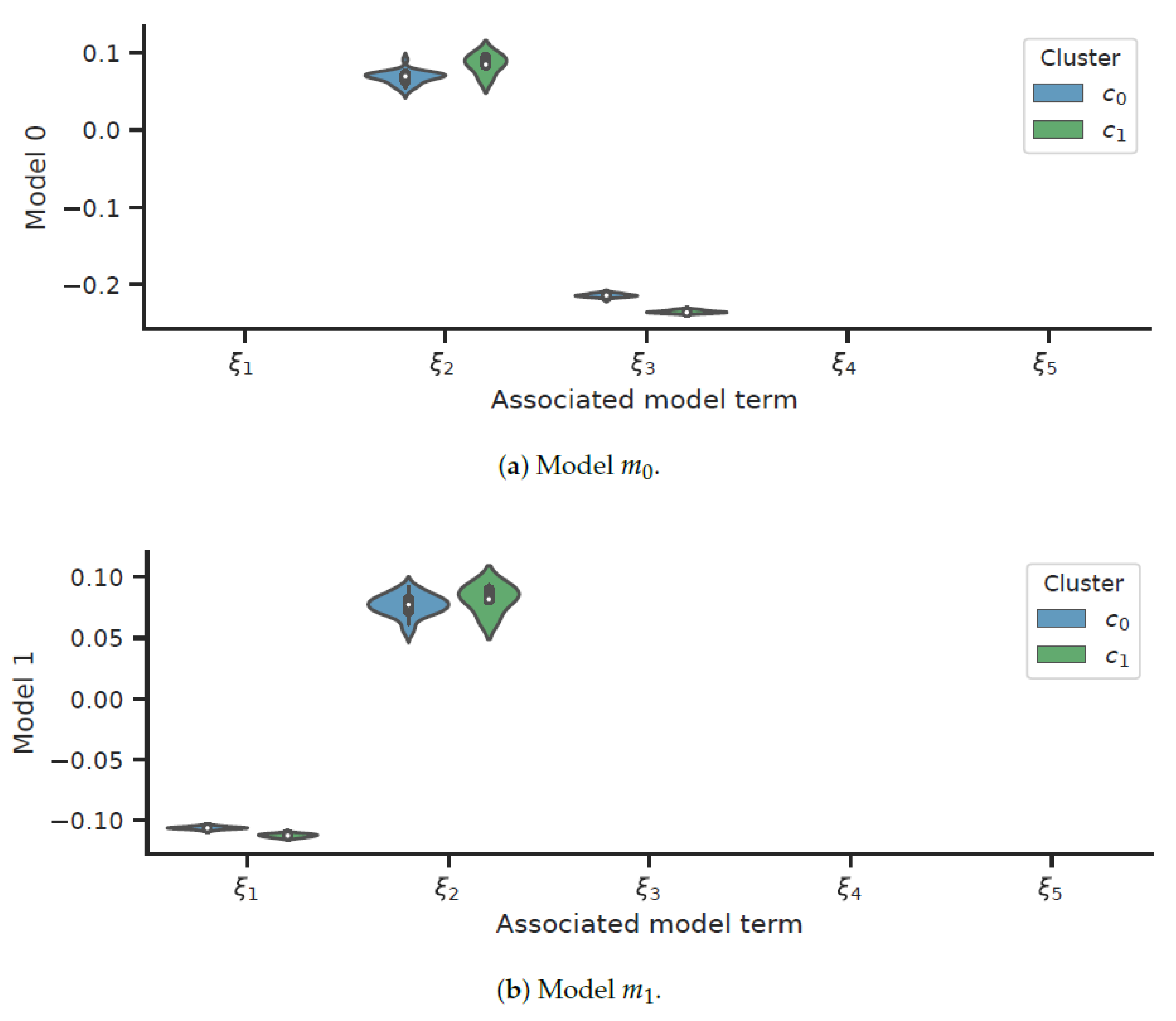
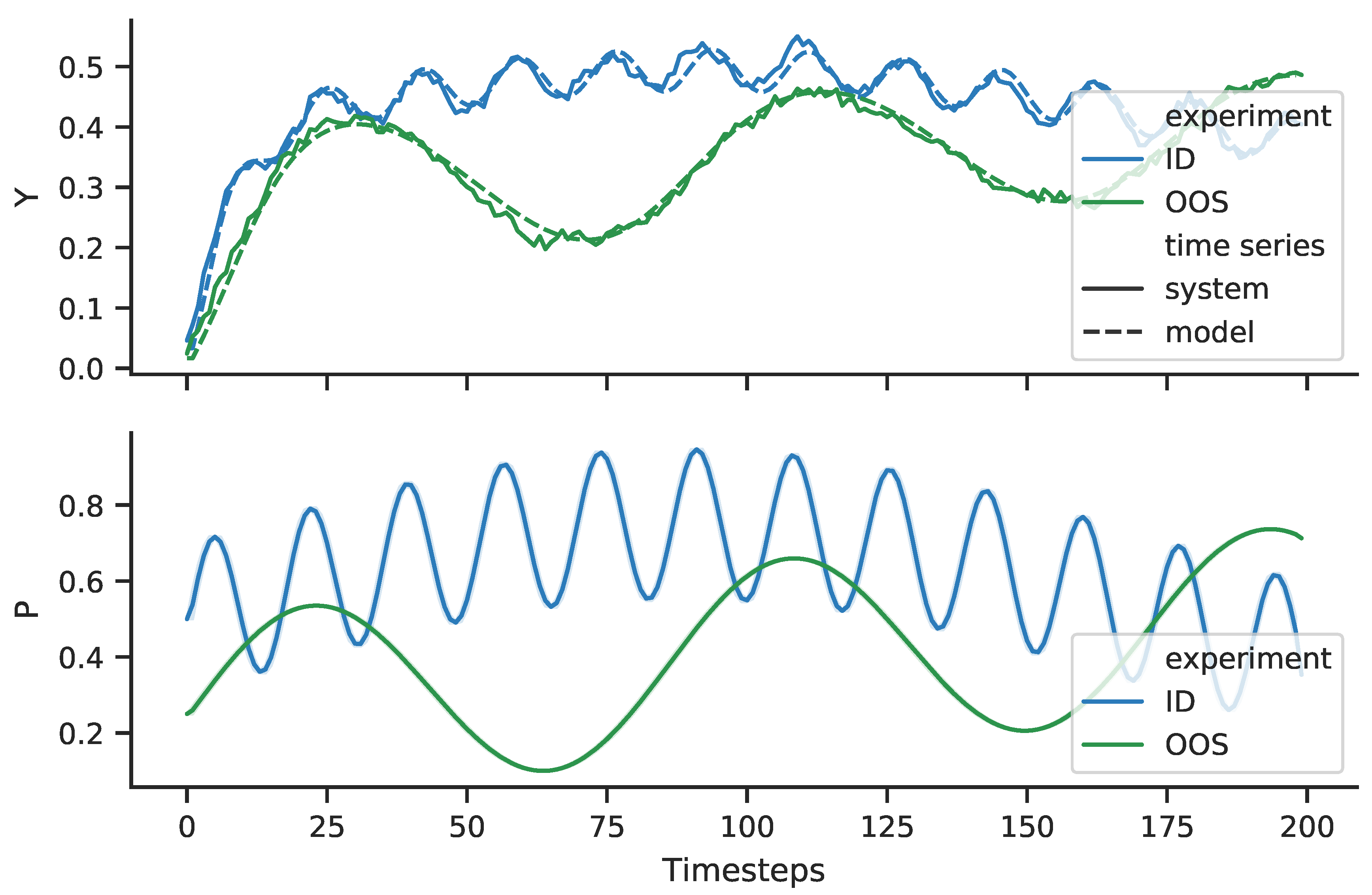
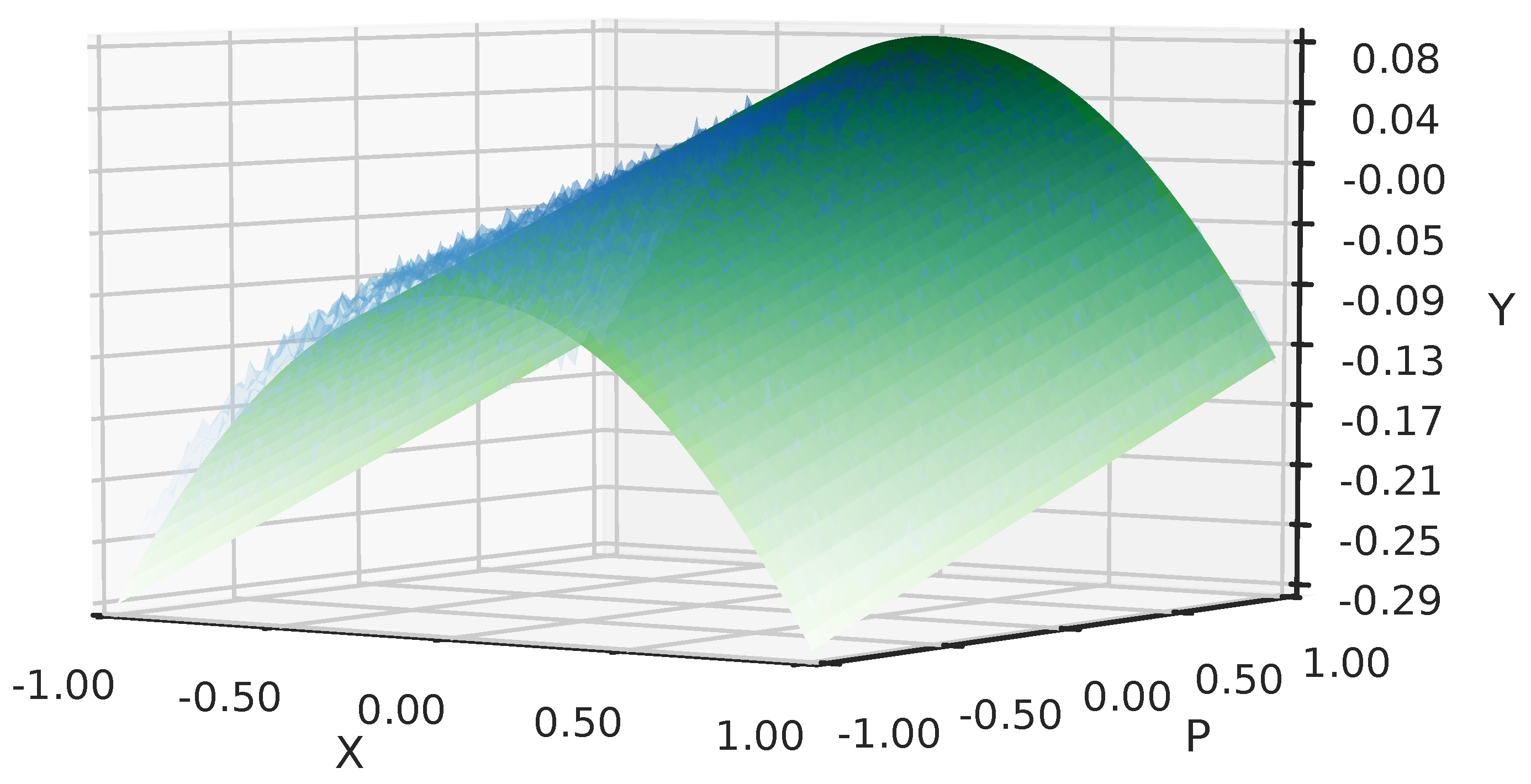
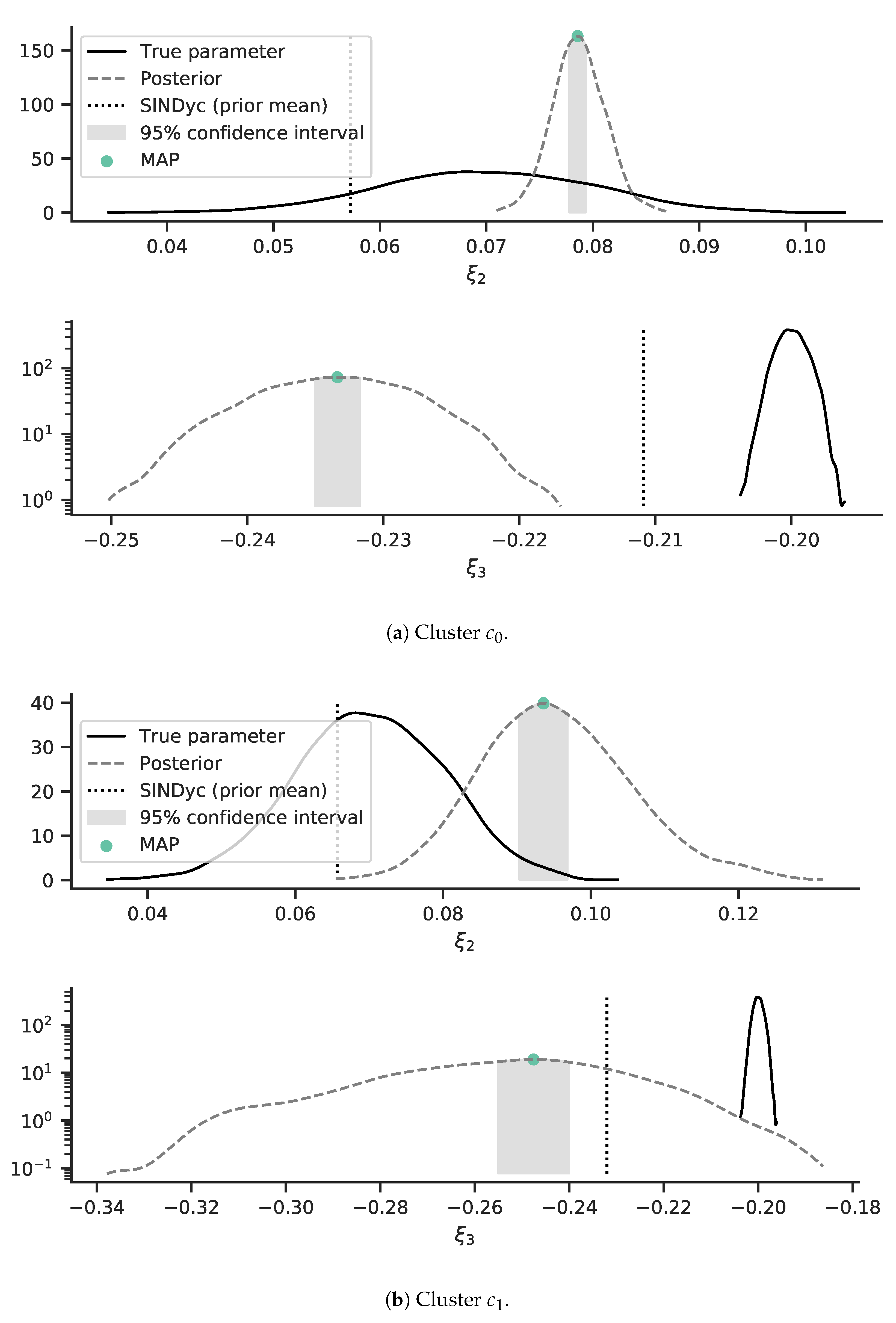
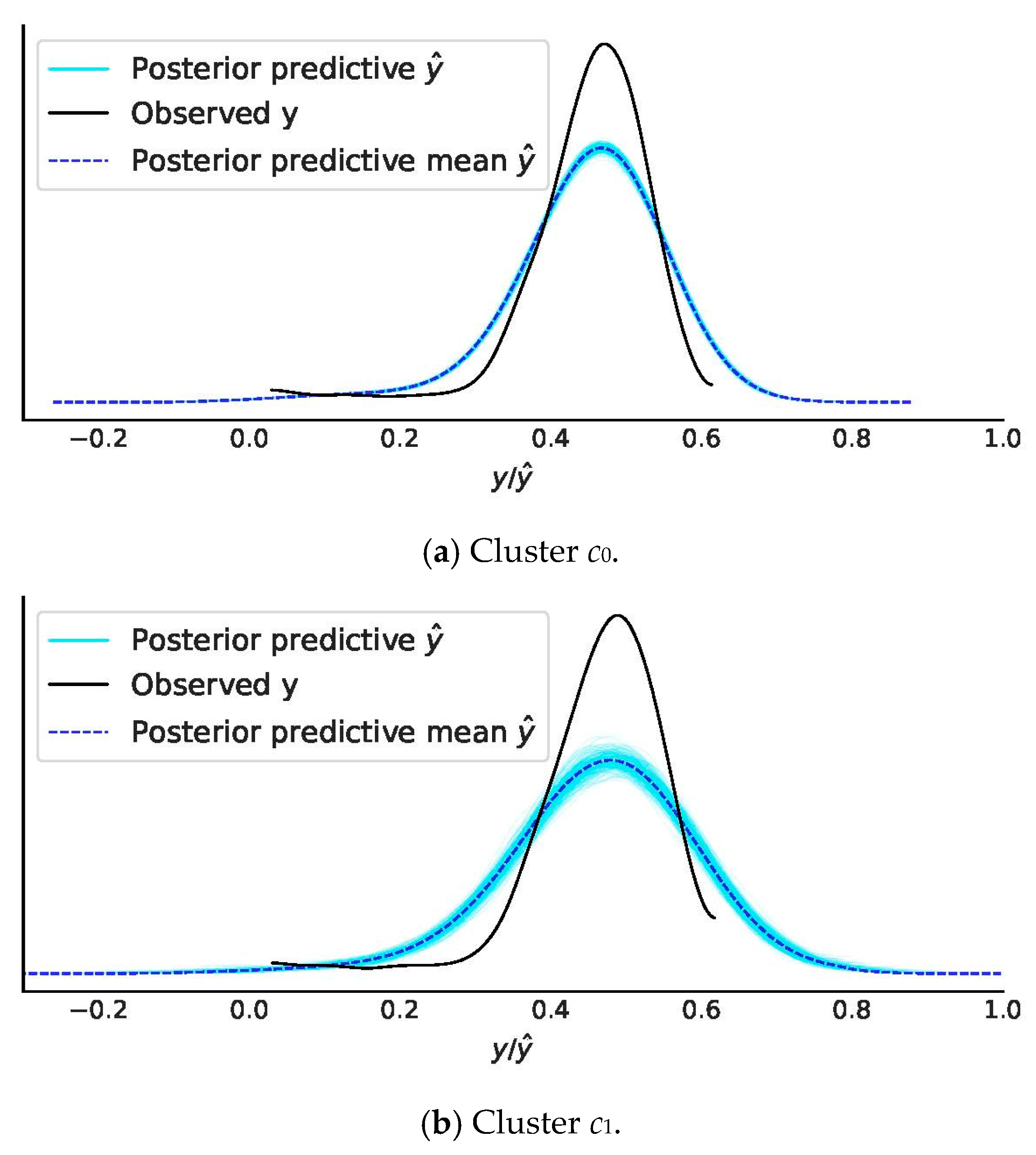
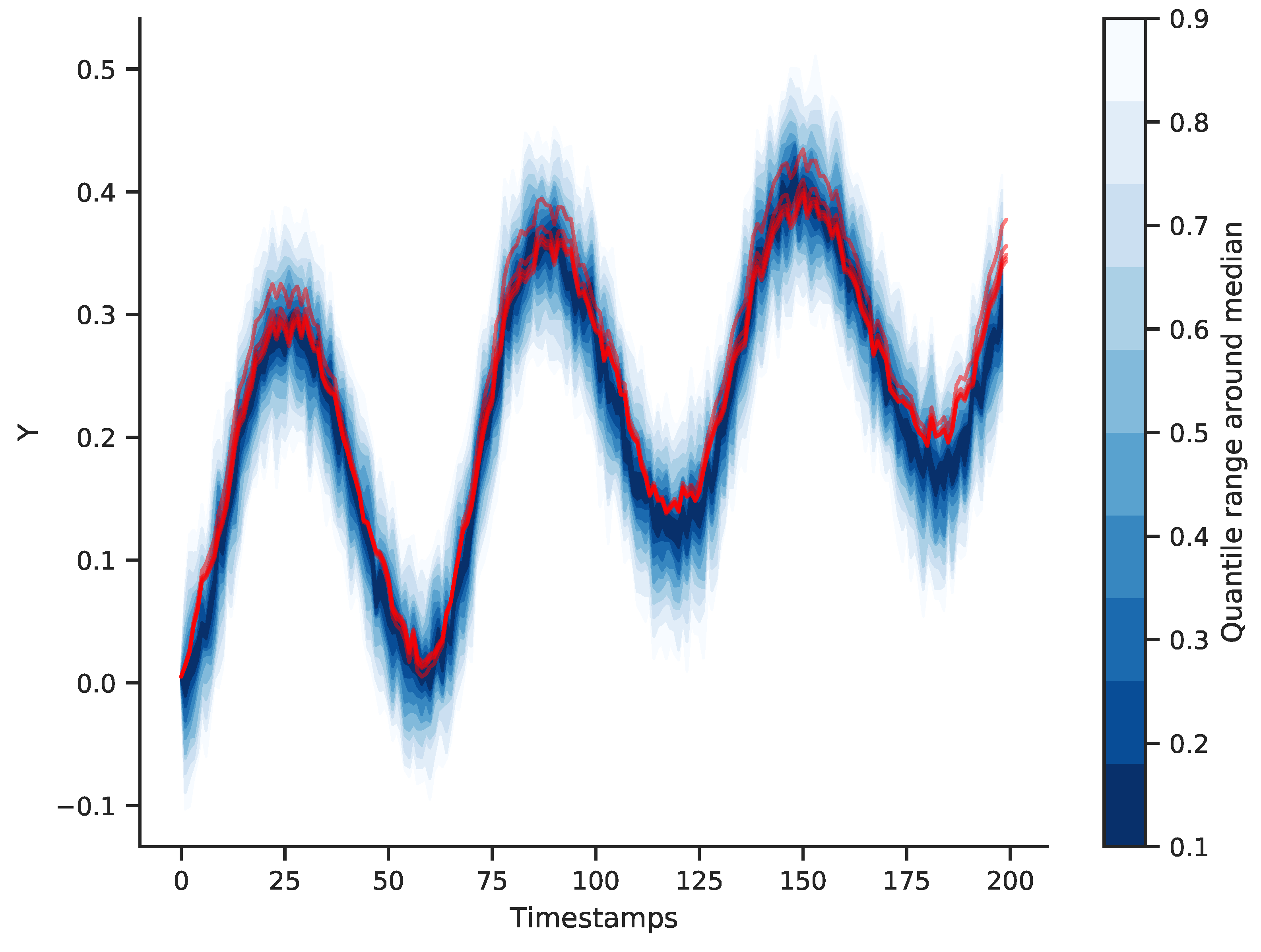
© 2020 by the authors. Licensee MDPI, Basel, Switzerland. This article is an open access article distributed under the terms and conditions of the Creative Commons Attribution (CC BY) license (http://creativecommons.org/licenses/by/4.0/).
Share and Cite
Banis, F.; Madsen, H.; Poulsen, N.K.; Guericke, D. Prosumer Response Estimation Using SINDyc in Conjunction with Markov-Chain Monte-Carlo Sampling. Energies 2020, 13, 3183. https://doi.org/10.3390/en13123183
Banis F, Madsen H, Poulsen NK, Guericke D. Prosumer Response Estimation Using SINDyc in Conjunction with Markov-Chain Monte-Carlo Sampling. Energies. 2020; 13(12):3183. https://doi.org/10.3390/en13123183
Chicago/Turabian StyleBanis, Frederik, Henrik Madsen, Niels K. Poulsen, and Daniela Guericke. 2020. "Prosumer Response Estimation Using SINDyc in Conjunction with Markov-Chain Monte-Carlo Sampling" Energies 13, no. 12: 3183. https://doi.org/10.3390/en13123183
APA StyleBanis, F., Madsen, H., Poulsen, N. K., & Guericke, D. (2020). Prosumer Response Estimation Using SINDyc in Conjunction with Markov-Chain Monte-Carlo Sampling. Energies, 13(12), 3183. https://doi.org/10.3390/en13123183





